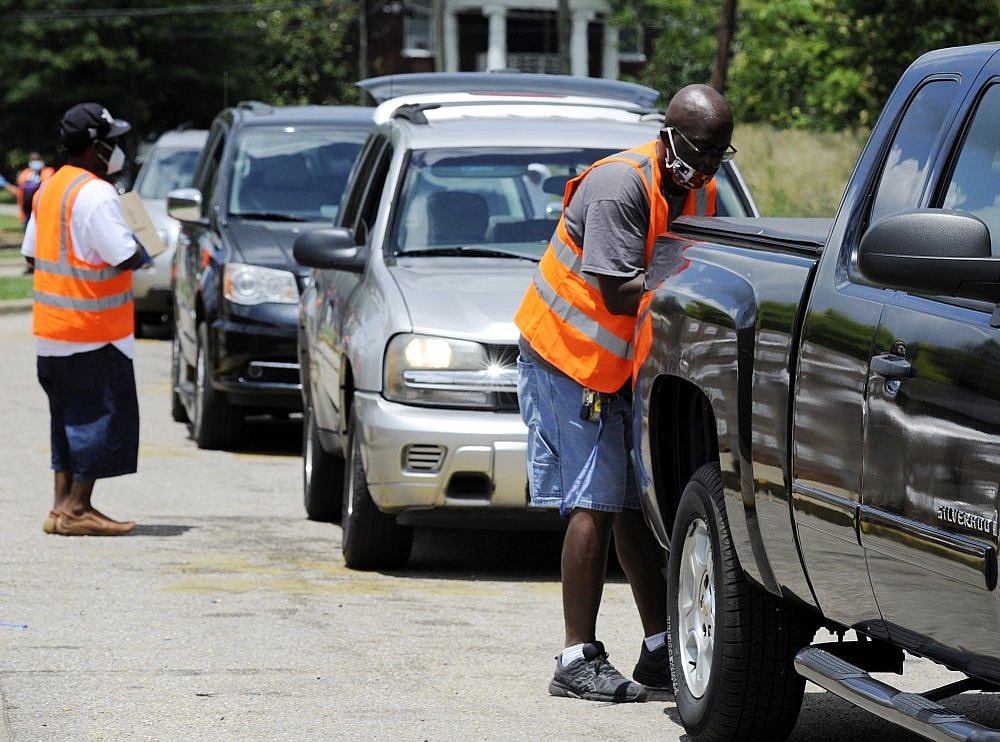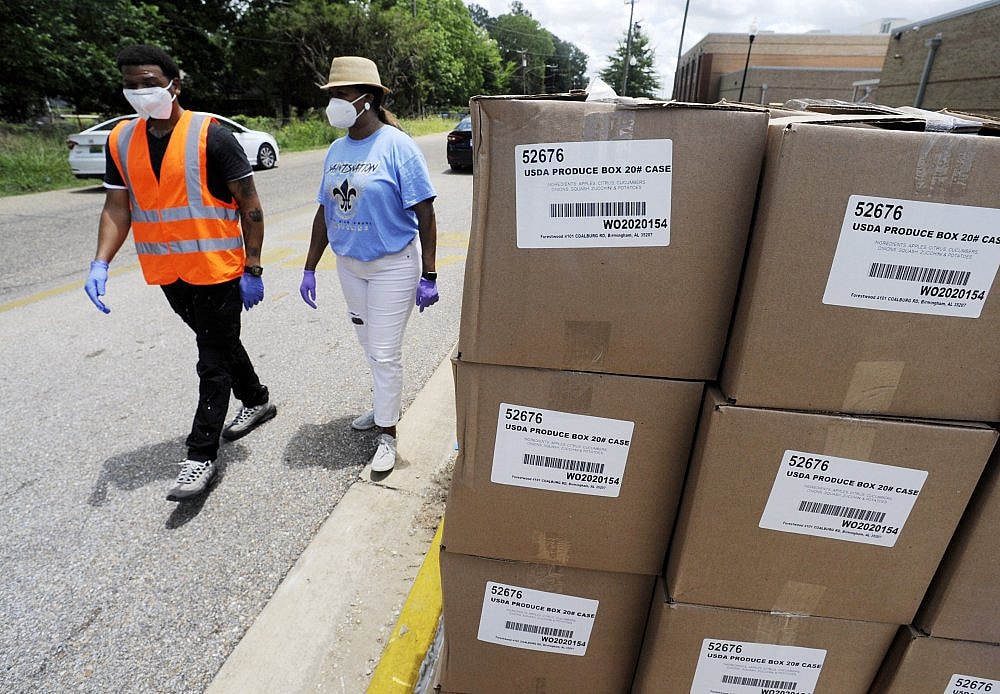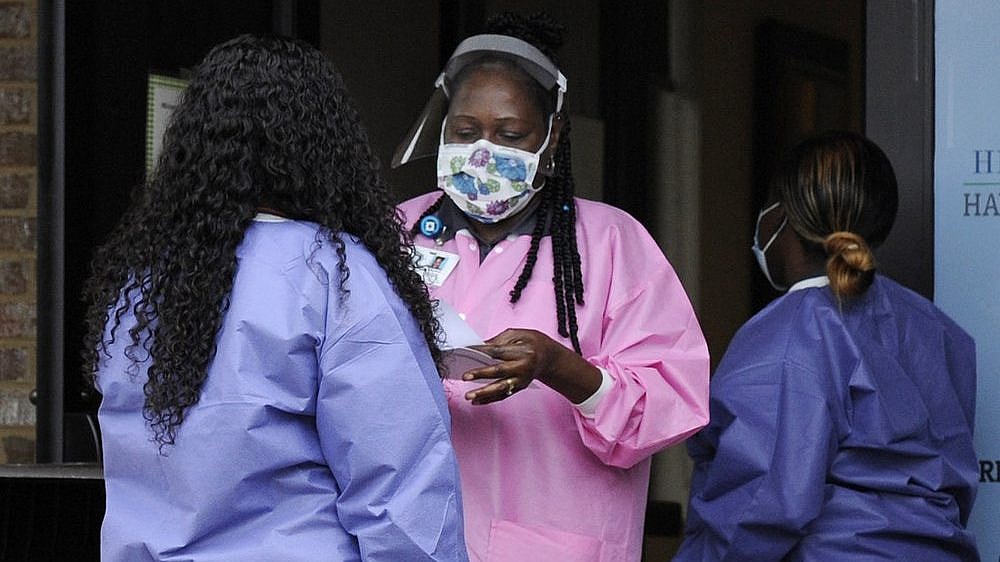SELMA, Ala. (AP) — Life can be tough even on a good day in the Black Belt, where some of the poorest people in America are, as usual, depending on each other to survive. Their struggle has become even more difficult with unemployment intensifying and coronavirus infections raging.
Both the need and the relief have been on display in the historic civil rights city of Selma, where volunteers distributed free food to scores of people, many of whom shared rides from isolated communities just to get to the school where boxes of fruit and vegetables were available.
“When the rest of the country catches a cold, a place like the Black Belt catches the flu,” said Lydia Chatmon, who works with the Selma Center for Non-Violence and helped coordinate with the Black Belt Community Foundation on last week’s donations.
Stretching from Louisiana to Virginia, the Black Belt is a crescent-shaped agricultural region first known for the color of its soil and then for its mostly black population. It provided for much of the antebellum South’s cotton economy, and remains home to many descendants of slaves. With relatively little industry and a declining population, poverty remains a constant problem.
RELATED: Black freelancers hit hard by COVID-19 get creative for income
Now the virus that causes COVID-19, which is killing U.S. blacks in disproportionately large numbers, has taken hold as well.
Black Belt counties have eight of the nine worst infection rates in Alabama, where more than 20,500 have tested positive for the virus, and more than 710 have died. The area also took the hardest hit from unemployment during the economic shutdown, with eight Black Belt counties having jobless rates near or above 20%.

And now that Alabama Gov. Kay Ivey has allowed businesses and many entertainment venues to reopen in a bid to stimulate the economy, worrying public health officials, cases of COVID-19 and hospitalizations have held steady or increased in the state.
It’s not that government isn’t helping: The food at the giveaway was donated through a federal program. And more than $4 million in pandemic assistance grants announced last week will go to agencies that serve Black Belt counties in Alabama. The money will help provide food, rent and medicine. Small-town coronavirus testing stations also have opened, so residents don’t have to travel to bigger cities to learn if they may be spreading the virus.
But the region also has mobilized to help itself. Clementine Blythe-Ellis, a high school teacher who is off for the summer, put on a protective mask to guard against the new virus and a hat to ward off the sun before showing to distribute food. The need, she said, never goes away.
“It’s every day, all day,” she said. “That’s why I am here.”
The Black Belt Community Foundation also is giving away 100,000 face masks, and people are using social media to share tips and resources, trying to reach residents who lack any internet at home. While broadband access is spotty across much of rural Alabama, some entire counties lack service in the Black Belt.
Dorothy Hall, a retired hospital worker who lives with her husband on disability, said that along with causing illness and death, the pandemic has dried up jobs, increased grocery prices and made it more difficult to do little things like get food and household supplies.
“You’re sort of like locked in every which way you turn,” said Hall, who arrived at the food distribution at Selma High School hours early to get the first spot in line. The school is less than 2 miles (3.2 kilometers) from the Edmund Pettus Bridge, where state troopers beat voting rights marchers 55 years ago.

Nearly 50 miles (80 kilometers) away in Hale County, Pastor James Franks’ Pine Grove Baptist Church is coordinating a weekly distribution of milk donated by Borden Dairy.
“Not just during this time, but at all times we should be assisting,” he said. “We’re trying to help so it won’t get to that bad.”
At the West Alabama Food Bank, which distributes food in half of Alabama’s 10 poorest counties, director Jean Rykaczewski said workers have distributed 1.4 million pounds of food since mid-March, or about 40% more than during a normal quarter.
RELATED: Black travel businesses devastated by cancellations due to COVID-19
But in far-flung areas where around a third of families either lack a vehicle or share just one, simply getting food to people has been a problem, since normal distribution channels through churches and assistance groups broke down during the virus shutdown, she said. People without transportation are having to pay as much as $20 for rides to the store or distribution sites, she said.
“You can set up trucks in parks all day long, but if you don’t have a way to get there it doesn’t help,” she said.
https://open.spotify.com/episode/3ZuyOfTmcLfkxzqMdftiCV


